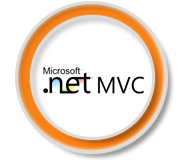Microsoft Asp.Net MVC Framework is established upon the renowned and time tested MVC (Model View Controller) Design Pattern. The framework promotes implementing and designing applications that enable you to have an enhanced code organization, easy extensibility, smooth testability, and code reuse and scalability. If you are working with Asp.Net MVC applications, you need to ensure to follow the below-mentioned techniques, thereby accomplishing enhanced Microsoft Asp.Net development.
1. Cache your data
You need to cache relatively stale data in order to augment the performance of your application by a substantial amount. Doing so will also mitigate the network bandwidth between the server and the client. In addition, it’s great for you to cache the rendered action of Web pages, which are relatively out-of-date or don’t get changed a lot over time.
2. Utilizing a Master View Model
Master Pages are frequently utilized is Asp.Net applications. There is the same Maser Page that gets extended by the Content Pages all through the application to render a sort of similarity so far as the feel, appearance, and functionality are concerned.
3. Utilize Extension Methods
You can utilize Extension Methods that simplify the usage of LINQ queries, which notch up application performance as well. This can very well mitigate the amount of code that you would require writing otherwise at the time of writing or working with LINQ queries. Furthermore, doing this will also allow for more manageable LINQ queries and improved application performance.
What is Microsoft Power Automate?
4. Segregate Data Access Logic from the Controller
In an Asp.Net MVC application, the Controller is intended to provide the apt view on the groundswell of the user interface action. Thus, you should utilize Repository Pattern to separate Data Access Logic from the Controller in which you would require dependency injection for injecting the apt Repository to your Controller in the real time.
5. Disable Request Validation
Request Validation is a characteristic that thwarts potentially risky content from being acquiesced. The feature is enabled or turned on by default. Nevertheless, very often you might require application for posting HTLM markup tags to the server. Thus, you would require the feature to be disabled.
Authentification with Active Directory (AD) with Asp.Net
6. Make use of Strongly Typed Models
A strongly typed view describes its data model like a CLR type rather than a feebly typed dictionary, which might contain possibly anything. For creating a strongly typed view, you need to click the Create a strongly-typed view checkbox whenever you create the view.
7. Cache Pages that are Public
It’s suggested not to cache pages, which require approval in Asp.Net MVC. Also, it’s advised not to cache pages that comprise confidential data or require authorization.
8. Utilize Model Binding
You can avail the benefit of Microsoft Velocity, which is a distributed engine for caching and enhancing the performance of the application with reference to your Asp.Net MVC applications.
9. Utilize Data Annotations for Authentication
You can utilize the System Component Model and Data Annotations for authenticating your server code by simply adorning the model with the indispensable attributes.
















Get in Touch